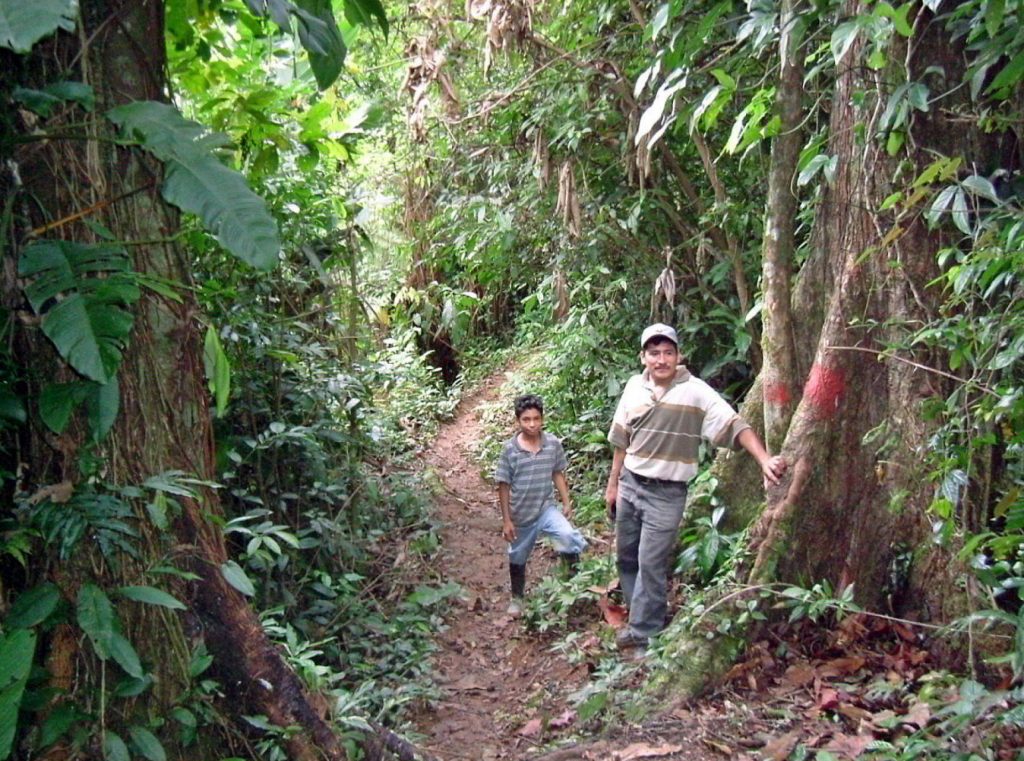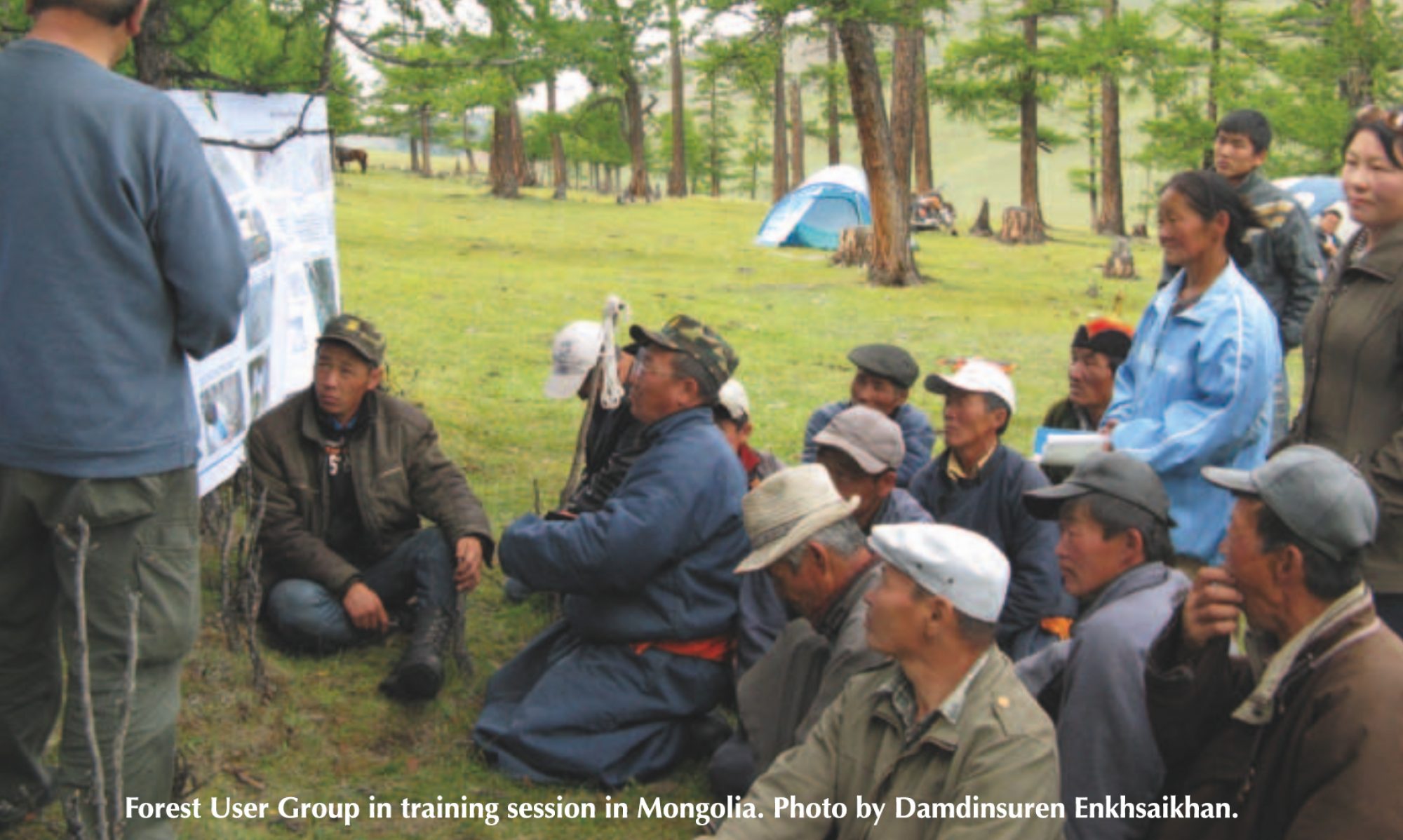
People in Honduras have always relied on the forest and its resources but it wasn’t until 1974 that the Social Forestry System was established to help people have better opportunities with forest resource use, as well as try to put in place protections to stop deforestation.[1] About 75% of Honduras is mountainous with lowland areas near the oceans and a few rivers. The climate is hot and humid, with temperatures ranging between 79 and 82 degrees with many forested areas. In the eastern part of the country, most people live off of subsistence agriculture and fishing. The northern coastal area is important economically since the soil allows crops including bananas, rice, palm oil, corn, fruits and beans to be grown. This also allows cattle, poultry and pigs to be raised. Because of the economic activity of this area the country’s only railroads are located here. In the central region coffee, tobacco, and wheat are grown in addition to many of the same crops that are grown in the north. This area is the most heavily populated but is very mountainous. In lowland areas banana farming is the main crop.
Eastern Honduras has large areas of pine and to the west large trees grow including mahogany, Spanish Cedar, rosewood and castilloa rubber.[2] In the late 1980s and 1990s efforts were made to protect forest areas with the establishment of national parks, protected forests and biological reserves.[3]
About 90% of the population is a mix of Spanish and Indian heritage and the official language is Spanish. Most people live in small villages in rural areas that are isolated due to the mountains, forests and bad roads. Close to half of the people live in cities, but these are mostly overcrowded with and air and water pollution problems and high crime rates. Health care for the poor is not very good so death rates from malaria and malnutrition are high among these groups. Dealing with bureaucracies and red tape is a challenge for Hondurans.[4]

Most Hondurans are poor and work in harsh conditions. At the start of the 21st century about a tenth of the GDP came from agriculture, with about two fifths of the land covered by forests, but the forest resources are not always used wisely. Wood is used for fuel, and clearing land for agriculture by using burning techniques has harmed many forests. A large portion of timber that is cut never makes it to a sawmill, and less than half of that gets processed into lumber. In response, the government put all forests into state ownership in1974, but forests continue to be degraded.[5]
Because of the poverty in rural regions and the deforestation that is taking place, the government of Honduras is making efforts to both improve the lives of people while at the same time protect forest resources. In September 2007, a new Forestry law was put in place and in 2010 the National Institute of Forest Conservation and Development came up with a law to combat illegal logging. In 2012, officials worked with the European Union to try to ensure that timber exports were legal, but the biggest threat was corruption among local officials and unclear forest tenure.[6] Since that time work has moved forward to strengthen community forestry, which is seen as the solution to halting forest degradation and helping poor rural populations make a better living while using the forest sustainably.
Stake holders in this process range from the government, which is helping to mandate laws and secure tenure for forest community groups to local officials and rural community members.[7] The focus on helping these community forest groups has helped the program to see some success. In 2004, five community forestry groups were given rights to 40,000 hectares of forest that had been severely impacted by illegal logging and fires. By 2010, illegal logging had been greatly reduced and forest fires were impacting less than 2% of the land.[8]
In terms of economic improvement among participants, one study found that people who participated in legal logging saw their incomes double within five years of joining the operation.[9] In the pine forest region over a 10 year period, community based forestry programs added around $7 million to the economy of three central highlands municipalities. The best results for participants in terms of employment are seen in communities that can use resin tapping, logging and other forest activities to generate income.[10]
While much of the news is positive, there are barriers to success. Corruption at the local level can impact how much of the benefits go to the locals who need the economic help. Some community based forestry groups get taken over by wealthy, powerful residents and some groups become fronts for illegal timber trade through payoffs to local political authorities. Further, lack of education and training of local community based forest participants has led to management and bookkeeping issues. Also, even though contracts are given to local forestry groups, there are often many groups who lay claim to the land, many times putting poor peasants and rich ranchers against each other in these disagreements. As mentioned earlier, bureaucracy and red tape are a big part of all Honduran’s lives and this includes the legal use of timber for the community forestry groups. These regulations make it much harder for local groups to manage the process, and increases the costs of producing the legal timber.[11]
Even though these challenges are in place, the overall outcome is that community based forestry is beneficial for both the environment and people involved. The 2010 Forestry Law has helped make it easier to give contracts to community forestry groups for long term use, but still only roughly a third of the groups have legal access to their forests. Most of the remaining groups have local approval of their rights to use, but they will need stronger support from the national government in the form of less complicated regulations, a stronger governing framework, and secure rights to forest areas.
Bibliography
“Community Forestry in Honduras.” Forest Trends Information Brief. Web. November 9, 2019. https://www.forest-trends.org/publications/community-forestry-in-honduras-a-path-towards-better-governance/.
“Honduras.” Britannica. Web. November 9, 2019. Web. https://www.britannica.com/place/Honduras.
[1] “Community Forestry in Honduras,” Forest Trends Information Brief. Web. November 9, 2019. https://www.forest-trends.org/publications/community-forestry-in-honduras-a-path-towards-better-governance/.
[2] “Honduras,” Britannica. Web. November 9, 2019. https://www.britannica.com/place/Honduras.
[3] Ibid.
[4] Ibid.
[5] Ibid.
[6] “Community,” Forest. https://www.forest-trends.org/publications/community-forestry-in-honduras-a-path-towards-better-governance/.
[7] Ibid.
[8] Ibid.
[9] Ibid.
[10] Ibid.
[11] Ibid.
